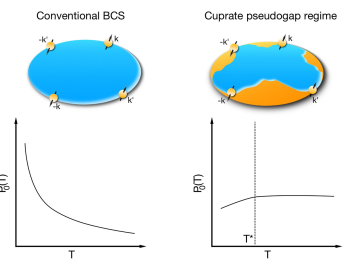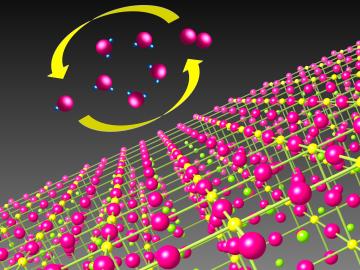
Filter News
Area of Research
- (-) Computer Science (3)
- (-) Materials (122)
- Advanced Manufacturing (5)
- Biological Systems (1)
- Biology and Environment (103)
- Biology and Soft Matter (4)
- Building Technologies (2)
- Chemical and Engineering Materials (3)
- Chemistry and Physics at Interfaces (7)
- Computational Biology (1)
- Computational Chemistry (5)
- Computational Engineering (1)
- Data (1)
- Electricity and Smart Grid (1)
- Energy Frontier Research Centers (7)
- Energy Science (169)
- Fuel Cycle Science and Technology (2)
- Functional Materials for Energy (8)
- Fusion and Fission (33)
- Fusion Energy (7)
- Geographic Information Science and Technology (1)
- Isotopes (22)
- Materials for Computing (13)
- Materials Synthesis from Atoms to Systems (8)
- Materials Under Extremes (7)
- National Security (45)
- Neutron Data Analysis and Visualization (2)
- Neutron Science (94)
- Nuclear Science and Technology (27)
- Quantum Condensed Matter (3)
- Quantum information Science (4)
- Sensors and Controls (2)
- Supercomputing (160)
- Transportation Systems (4)
News Type
News Topics
- 3-D Printing/Advanced Manufacturing (4)
- Advanced Reactors (1)
- Artificial Intelligence (4)
- Big Data (2)
- Bioenergy (2)
- Biomedical (2)
- Buildings (1)
- Chemical Sciences (7)
- Clean Water (2)
- Composites (2)
- Computer Science (10)
- Coronavirus (1)
- Cybersecurity (1)
- Energy Storage (6)
- Environment (7)
- Exascale Computing (1)
- Fusion (2)
- Grid (2)
- High-Performance Computing (1)
- Isotopes (6)
- Machine Learning (3)
- Materials (19)
- Materials Science (17)
- Mathematics (1)
- Microscopy (6)
- Nanotechnology (8)
- Neutron Science (9)
- Nuclear Energy (9)
- Partnerships (3)
- Physics (10)
- Polymers (4)
- Quantum Computing (1)
- Security (1)
- Space Exploration (1)
- Summit (1)
- Transportation (4)
Media Contacts

Researchers have long sought electrically conductive materials for economical energy-storage devices. Two-dimensional (2D) ceramics called MXenes are contenders. Unlike most 2D ceramics, MXenes have inherently good conductivity because they are molecular sheets made from the carbides ...


Barely wider than a strand of human DNA, magnetic nanoparticles—such as those made from iron and platinum atoms—are promising materials for next-generation recording and storage devices like hard drives. Building these devices from nanoparticles should increase storage capaci...

Deep stores of carbon in northern peatlands may remain stable despite rising temperatures, according to a team of researchers from several U.S.-based institutions. And that is good news for now, the researchers said. Florida State University ...




Catalysts make chemical reactions more likely to occur. In most cases, a catalyst that’s good at driving chemical reactions in one direction is bad at driving reactions in the opposite direction. However, a research team led by the Department of Energy’s Oak Ridge National Laboratory ...
![In unbound calyx[4]pyrrole, two pyrrole “petals” are flipped up and two, down. In unbound calyx[4]pyrrole, two pyrrole “petals” are flipped up and two, down.](/sites/default/files/styles/list_page_thumbnail/public/news/images/anion_hr5_0.jpg?itok=R1TMZHqu)
Atomic charges in chemical solutions are like Switzerland—they strive for neutrality. The tendency to balance charges drives dynamics when charged atoms or molecules, called ions, are present in solutions. Recently, researchers at the Department of Energy’s Oak Ridge National Laborat...

Rare earth elements are metals used in technologies from wind turbines and magnetic resonance imaging agents to industrial catalysts and high-definition televisions. Most are lanthanides, elements with atomic number from 57 to 71, lanthanum to lutetium, in the periodic table. The la...


